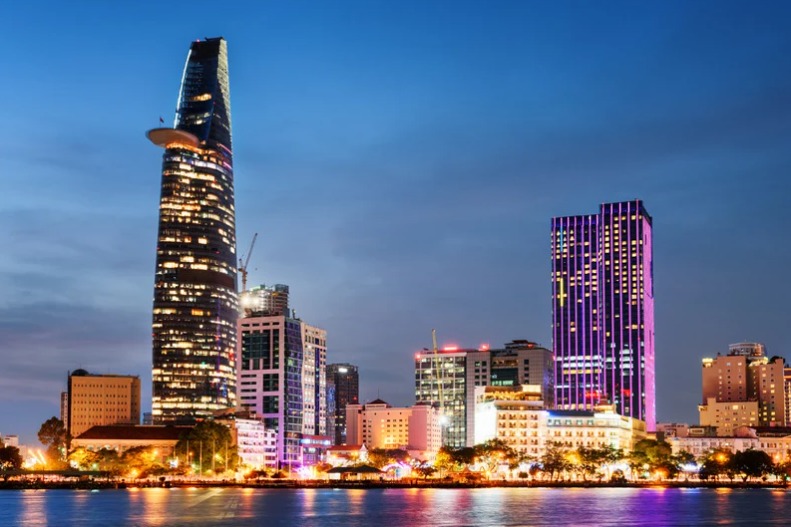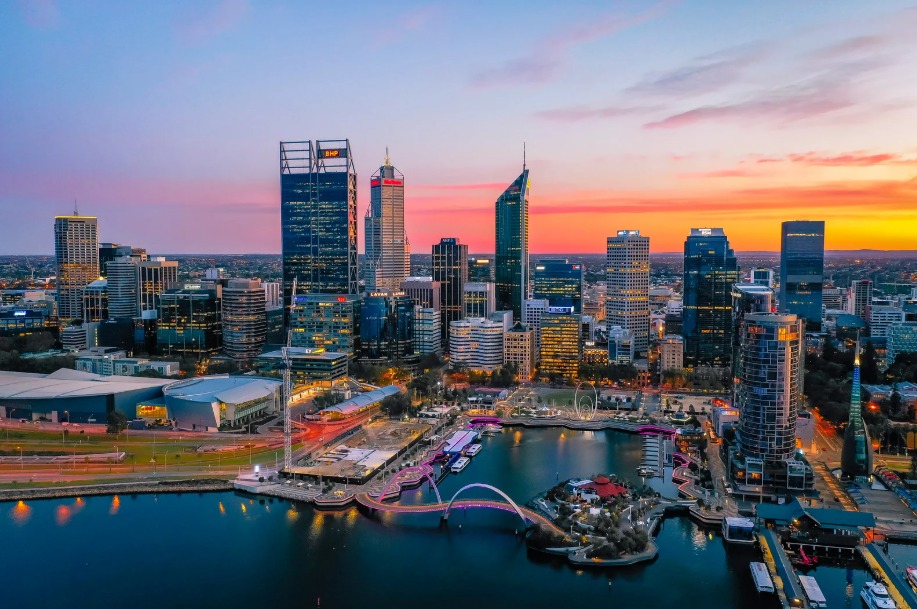Newsletter
Keep yourself update with our current news for Juwai IQI

Why Real Estate Is Pakistan’s Top Investment Choice
Written by Junaid Hamid, Head of IQI Karach PakistanInvesting in Pakistan: Which Route is Best?In Pakistan, real estate has emerged as a more attractive investment option compared to traditional banking deposits and other financial instruments. Offering average annual returns between 15% to 20%, it significantly outperforms bank deposit interest rates of 5% to 8%. Real estate also benefits from long-term appreciation—particularly in major cities like Karachi, Lahore, and Islamabad, where property prices have consistently risen by 10% to 15% annually over the past decade. Additionally, rental income provides investors with a reliable cash flow, with yields ranging from 4% to 6% per annum.Beyond returns, real estate in Pakistan offers strategic advantages such as tax incentives and portfolio diversification. Investors can benefit from capital gains tax exemptions and mortgage interest deductions up to PKR 2 million. Moreover, with a low correlation to stock market performance, real estate serves as a valuable hedge against market volatility. Altogether, these factors make real estate a compelling and resilient investment choice for those seeking long-term financial growth in Pakistan.Click for more info!Download
25 June

India Modernises Real Estate with New Registration Bill
Written by Manu Bhazin, Country Head of IndiaIndia’s Property Market Enters the Digital Age with Registration Bill, 2025The Government of India has introduced the draft Registration Bill, 2025, marking a major step towards modernising the country’s real estate sector. This new legislation, set to replace the outdated Registration Act of 1908, has been developed by the Department of Land Resources under the Ministry of Rural Development. It aims to digitise and streamline property registration processes in line with India’s push for digital governance, enhancing transparency, efficiency, and ease of access for citizens.With the rising demand for property ownership and leasing in urban and semi-urban areas, the bill addresses the growing need for secure, accessible, and verifiable land records. By reforming how property transactions are documented and managed, the bill seeks to boost investor confidence and ensure smoother, more reliable real estate dealings across the country.Click for more info!Download
25 June

Hong Kong’s Office & Housing Market Update
Written by Nelson Li, Head of IQI Hong KongHong Kong’s office market showed a modest recovery in April 2025, with a net absorption of 39,700 sq ft, led by notable deals such as The Payment Cards Group Limited’s 12,100 sq ft lease in Tsimshatsui. While the overall vacancy rate remained stable at 13.7%, submarkets experienced mixed performance—vacancy rose in Central and Hong Kong East due to prior consolidations, while Wanchai/Causeway Bay, Tsimshatsui, and Kowloon East saw slight improvements. Office rents continued to decline for the 36th consecutive month, down 0.5% overall, with drops of 0.4% to 0.6% across key districts. In a significant transaction, HKEX purchased nine office floors and retail space in One Exchange Square for HKD 6.3 billion to establish its new headquarters.The residential market saw a 6.1% month-on-month rise in transaction volumes in April, driven by a surge in secondary market activity, although primary sales dropped slightly to 1,614 units. Despite this, large project launches like Sierra Sea Phase 1A(2) sold out all 318 units on launch day, indicating solid demand. Mass residential capital values slipped 0.2% after a slight rebound in March.Meanwhile, the one-month HIBOR dropped sharply to 1.35% by mid-May, easing mortgage repayment costs and potentially improving buyer sentiment. A standout luxury deal saw a high-floor unit at Opus Hong Kong sold for HKD 512 million, or HKD 94,048 per sq ft.Click for more info!Download
25 June

Clark & Nuvali Lead New Housing Trends in Philippines
Written by Emmanuel Andrew Venturina, Head of IQI PhilippinesBeyond the Metro: Clark and Nuvali Lead the Shift in Philippine Homebuyer TrendsThe Philippine real estate landscape is experiencing a significant shift as homebuyers increasingly look beyond Metro Manila for house and lot investments. Driven by the rise of remote work, affordability, infrastructure expansion, and lifestyle preferences, emerging areas like Clark Global City in Pampanga and Nuvali in Laguna are gaining popularity. Young families, overseas Filipinos, and professionals are drawn to these locations for their greener environments, larger living spaces, and lower density—while still maintaining connectivity to Metro Manila’s economic centers.Clark Global City is evolving into a key northern business and residential hub, bolstered by major infrastructure developments and investor-friendly policies. Meanwhile, Nuvali offers a model for sustainable living, with eco-friendly features, established amenities, and strong developer backing. These developments signal a long-term trend toward township-style communities that prioritize quality of life. As urban land in Metro Manila becomes increasingly scarce and costly, destinations like Clark and Nuvali are set to become focal points for future housing demand and real estate growth.Click for more info!Download
25 June

HCMC Plans $7B Financial Hub in Thu Thiem
Written by Dustin Trung Nguyen, Head of IQI VietnamVietnam Real Estate Market OverviewHo Chi Minh City (HCMC) has announced a bold vision to create a US$7 billion international financial hub in District 1 and Thu Thiem Urban Area, with the initial nine-hectare phase centered in Thu Thiem. This strategic move includes regulatory infrastructure and talent development, signaling elevated residential interest in the Thu Duc area. However, it also adds speculation risk, as housing prices—already high—are rising fast. In Q1 2025, property prices in some regions soared 20-40% year-on-year, and Vietnam’s house price-to-income ratio now stands at 24.7–26, far exceeding the global affordability benchmark of 15.On the commercial side, Hanoi’s mid-tier serviced apartment rents climbed 14% in Q1 to US$25/sqm/month. Meanwhile, Vietnam’s legal stance on short-term rentals is under scrutiny. Though current law restricts Airbnb-style leases, legal gaps remain—no precise definitions of “short-term” exist, and many argue such bans infringe on homeowners’ rights as outlined in the Civil Code. Regulatory revisions are likely, with implications for both local landlords and the broader property leasing market.Click for more info!Download
25 June

Canada’s Property Market Mixed in May 2025
Written by Yousaf Iqbal, Head of IQI CanadaAs of May 2025, Canada's real estate market is showing mixed signals, with national home sales down 9.8% year-over-year and a fifth consecutive monthly decline in activity. The sales-to-new-listings ratio (SNLR) rose slightly to 47%, indicating a broadly balanced market, though regional differences persist. Ontario remains in buyer's market territory with a 35% SNLR, while Alberta (63%) and Quebec (70%) reflect strong seller conditions. The national median price for single-family homes dipped 1.1% month-on-month and 3.1% year-on-year, led by softness in major cities like Toronto and Vancouver. TRREB highlighted economic uncertainty and high costs as challenges, urging federal reforms to improve affordability and supply.In the Greater Toronto Area (GTA), affordability improved thanks to falling prices and lower borrowing costs. May saw 6,244 transactions (down 13.3% y-o-y), while new listings rose 14%, easing supply constraints. The average price dropped 4% to $1.12 million, and the benchmark index fell 4.5%, though both metrics posted monthly gains—hinting at early recovery. Vancouver saw sharper declines, with sales falling 18.5% y-o-y and inventory hitting a 10-year high. Benchmark prices dropped 2.9%, reinforcing its buyer’s market status. In contrast, Quebec remained a bright spot, with home sales up 12% in Montreal and Quebec City, strong price growth, and limited inventory supporting a competitive seller’s market outlook.Click for more info!Download
25 June

Australia’s Housing Market Rebounds in May
Written by Lily Chong, Head of IQI GlobalAustralia’s housing market saw a solid rebound in May, with national dwelling values climbing 0.5%, bringing the year-to-date increase to 1.7%. This growth was consistent across all capital cities, each registering at least a 0.4% gain. According to CoreLogic's Tim Lawless, the momentum has been reignited by February and May interest rate cuts, lifting auction clearance rates and buyer confidence.While national annual growth slowed to 3.3%—the weakest since August 2023—only Melbourne and Canberra posted year-on-year declines, underscoring the overall market’s resilience. The narrowing performance gap between cities suggests a more synchronized market recovery, with even lagging regions like Melbourne showing early signs of stabilisation.Perth continues to dominate, supported by a robust economic backdrop, including low unemployment, diversified industry growth, and ongoing job creation. REIWA reported Perth’s median house price hit $780,000 in May—up 18% annually—while units soared 21% to $535,000. This is driven by sustained demand amid modest population growth and a solid employment base in Western Australia.Additionally, premium housing segments are gaining momentum, especially in Sydney and Canberra, reversing earlier trends that favored more affordable homes. Across the board, Australia’s property market is showing renewed vigor, with expectations of continued upward momentum through the second half of 2025.Click for more info!Download
25 June

Residential Market Correction: What Q1 2025 Tells Buyers and Sellers
Written by Muhazrol Muhamad, GVP, Head of Bumiputra SegmentIn 2025, global property investors are increasingly turning to emerging markets that offer strong growth potential outside traditional hubs like London and Dubai. Destinations such as Penang and Johor Bahru in Malaysia offer affordable, high-quality developments alongside improved visa options and key infrastructure like the RTS link to Singapore. Sri Lanka’s southern coast is bouncing back with low-cost coastal properties and favorable foreign investment policies, while Albania's scenic Riviera draws European interest due to its affordability and EU aspirations. Inland Portugal regions like Braga and Alentejo appeal with their tranquility and lower prices compared to coastal cities, and Türkiye remains attractive thanks to its citizenship-by-investment program and vibrant expat communities in coastal cities.At the same time, North and East Bali are emerging as strategic alternatives to the saturated south, with developers and investors focusing on eco-tourism and sustainable villa developments. Across these under-the-radar markets, common 2025 investment themes include liberalizing residency laws, strong tourism recovery, infrastructure growth, and investor-friendly policies. These trends are creating compelling opportunities for buyers seeking stable rental returns and versatile properties suited to both leisure and remote working lifestyles.Click for more info!
24 June

































